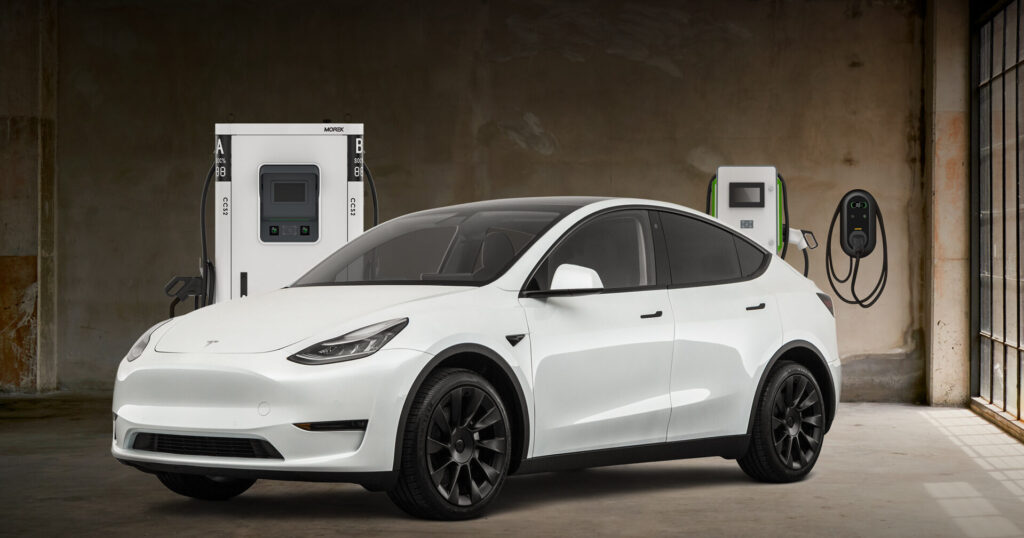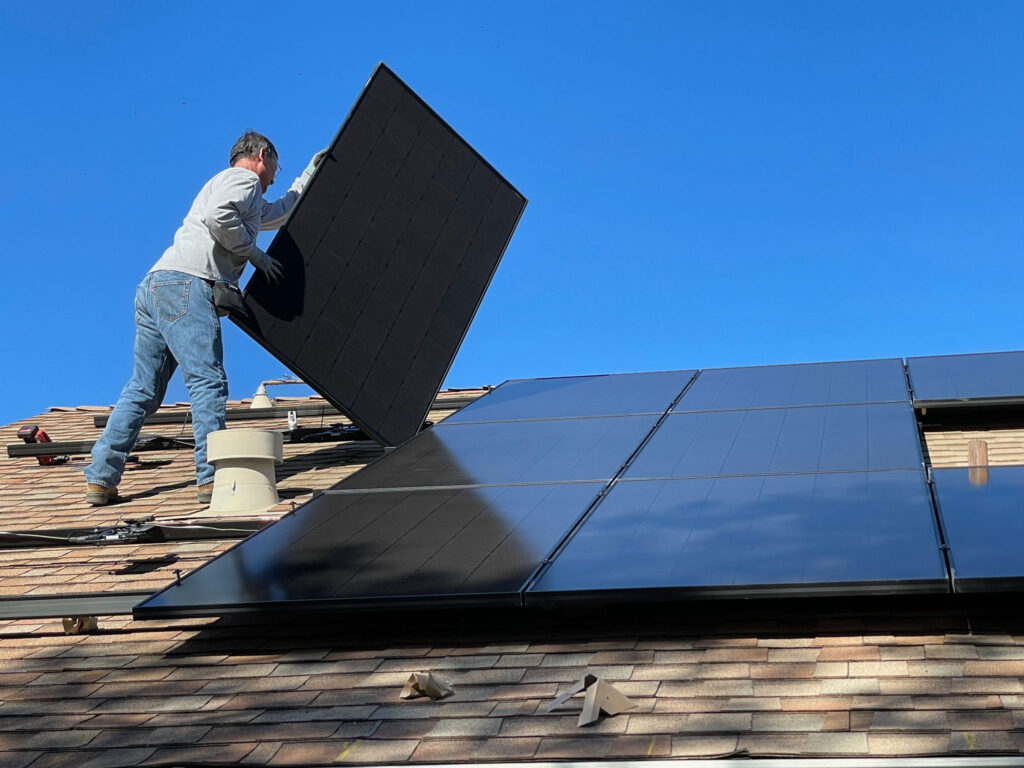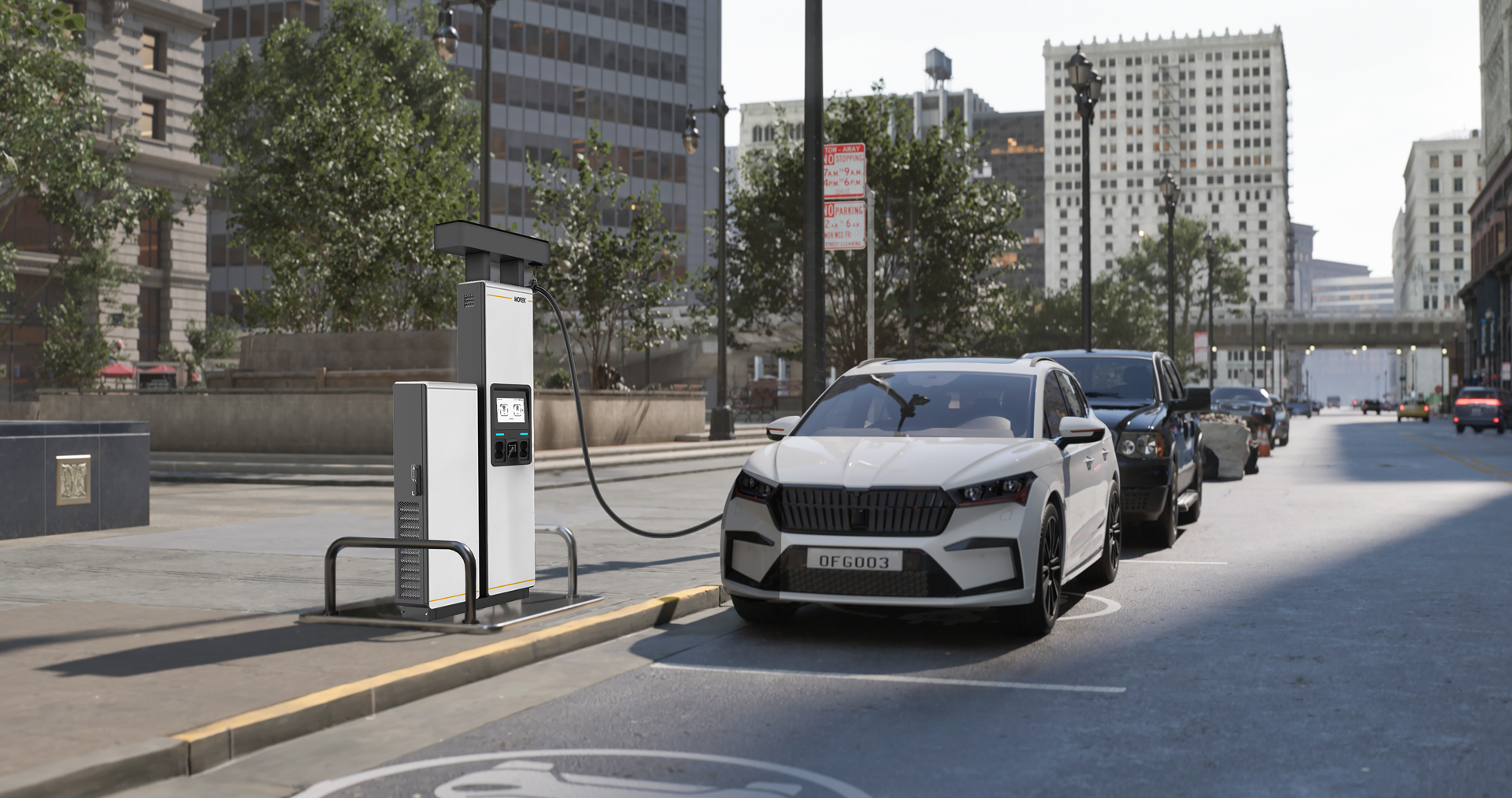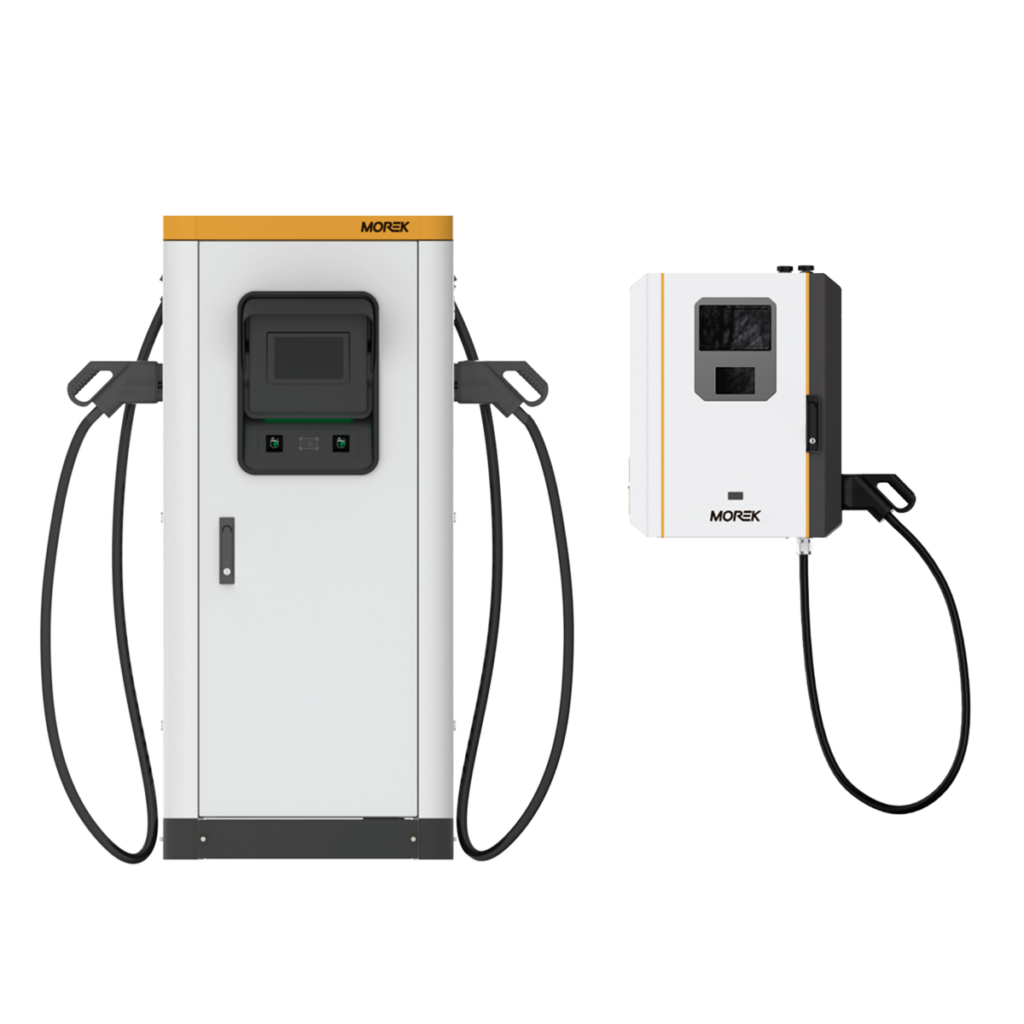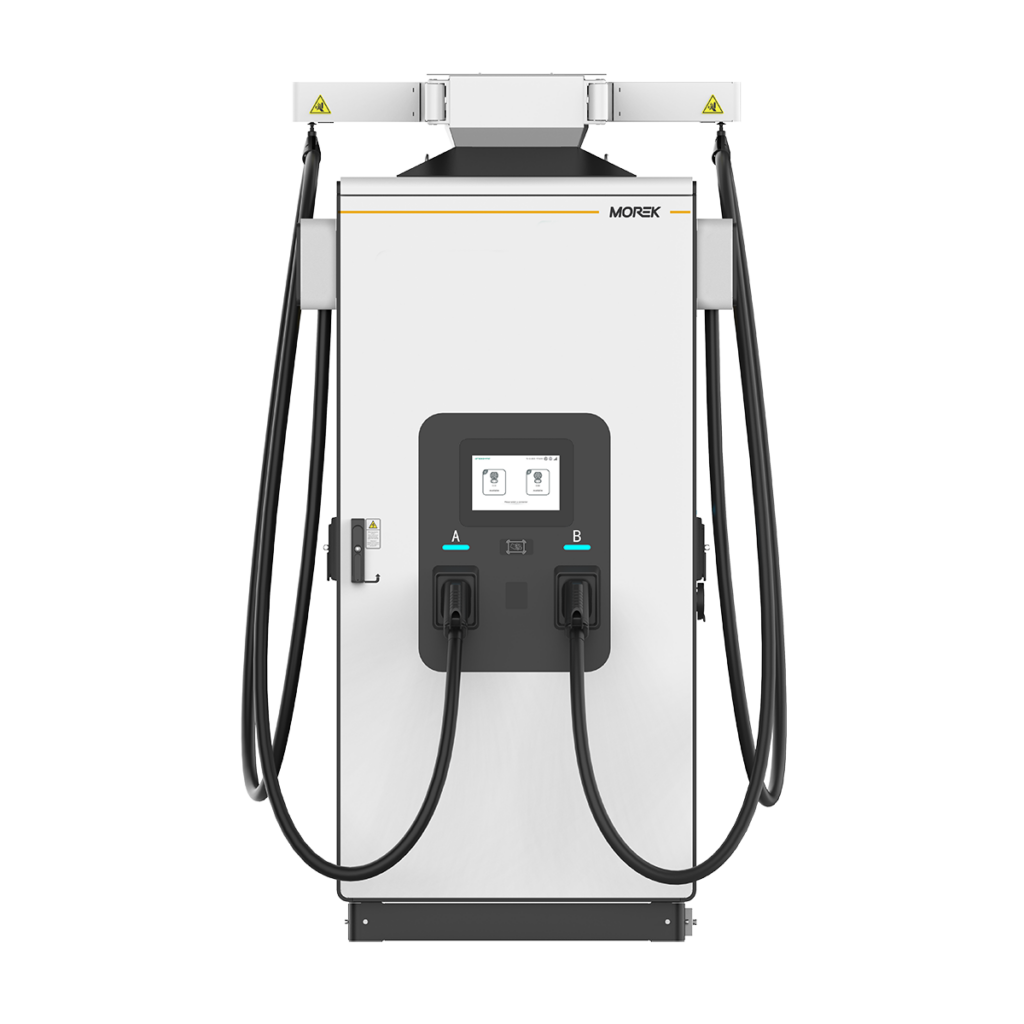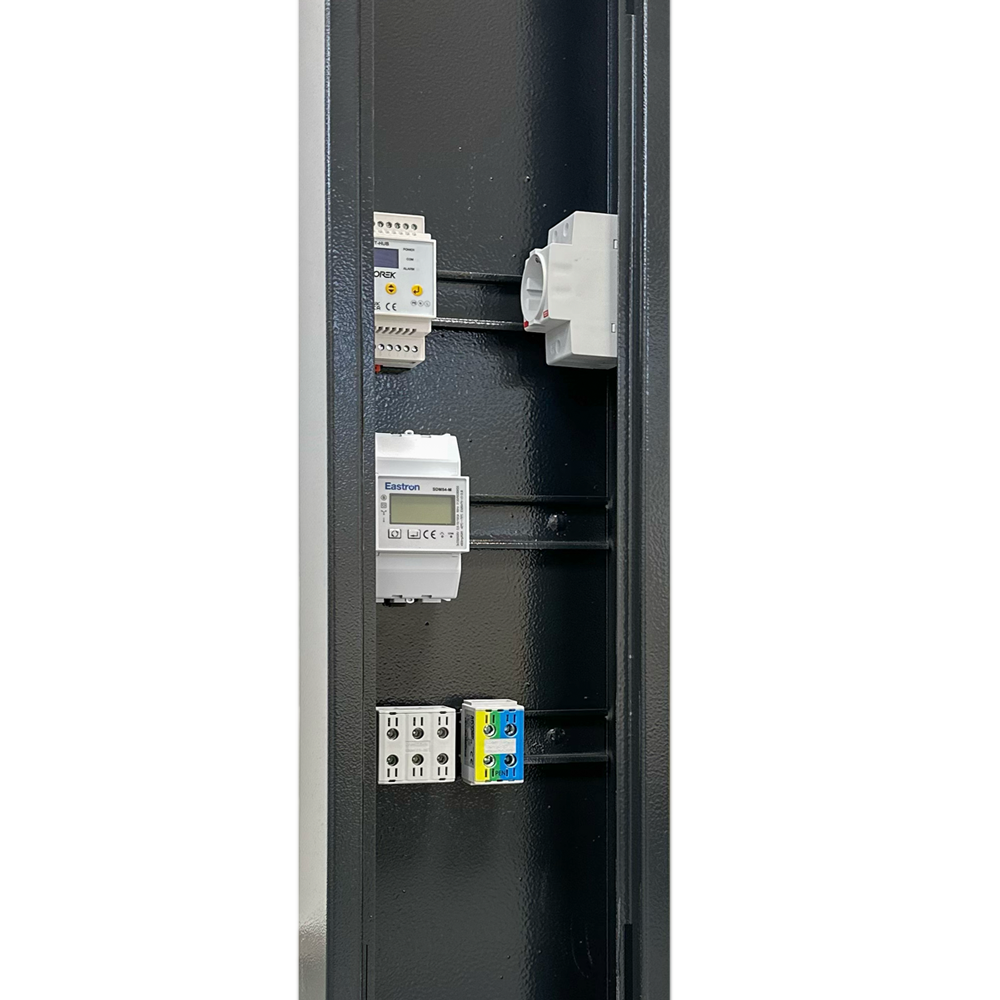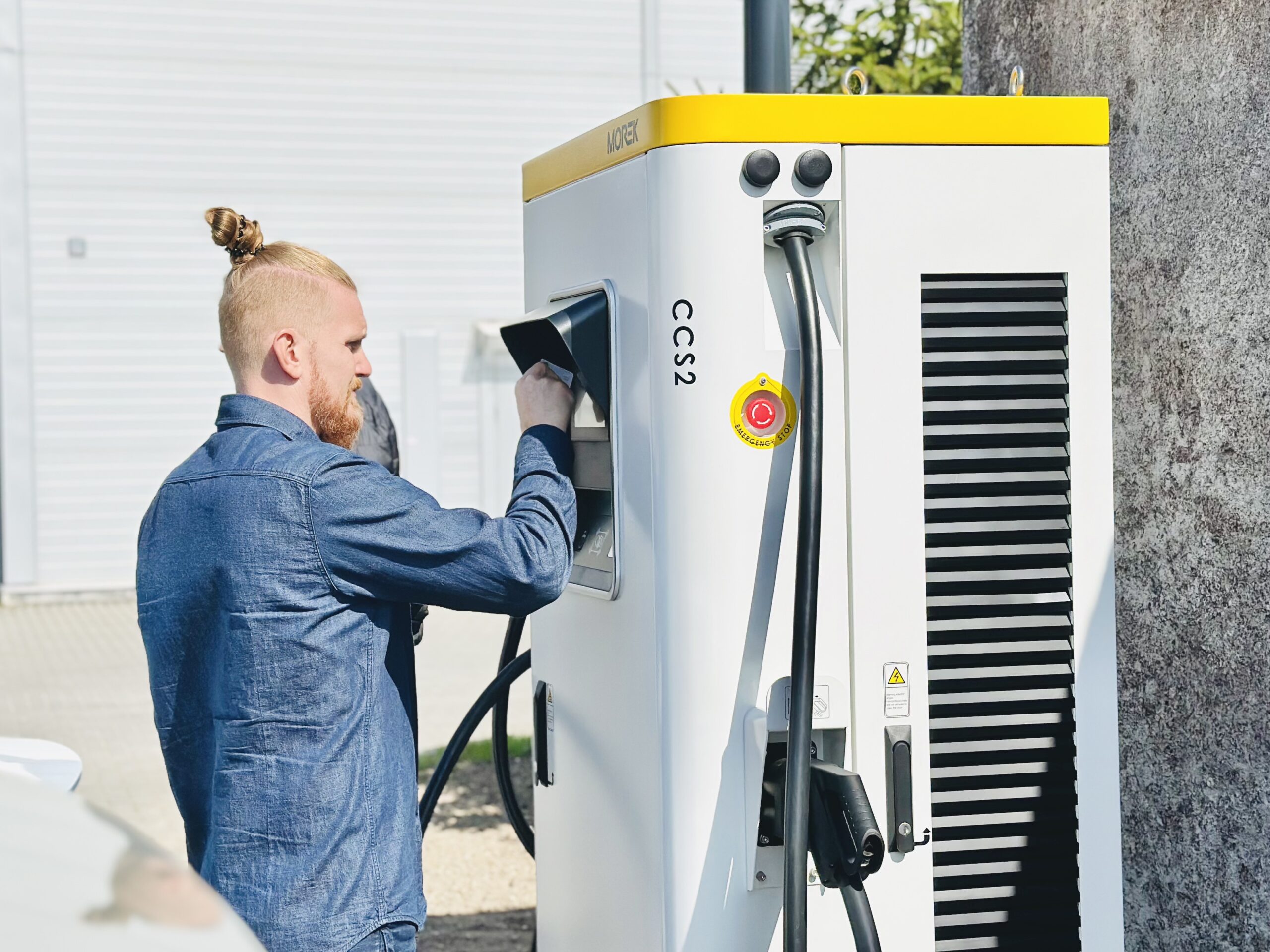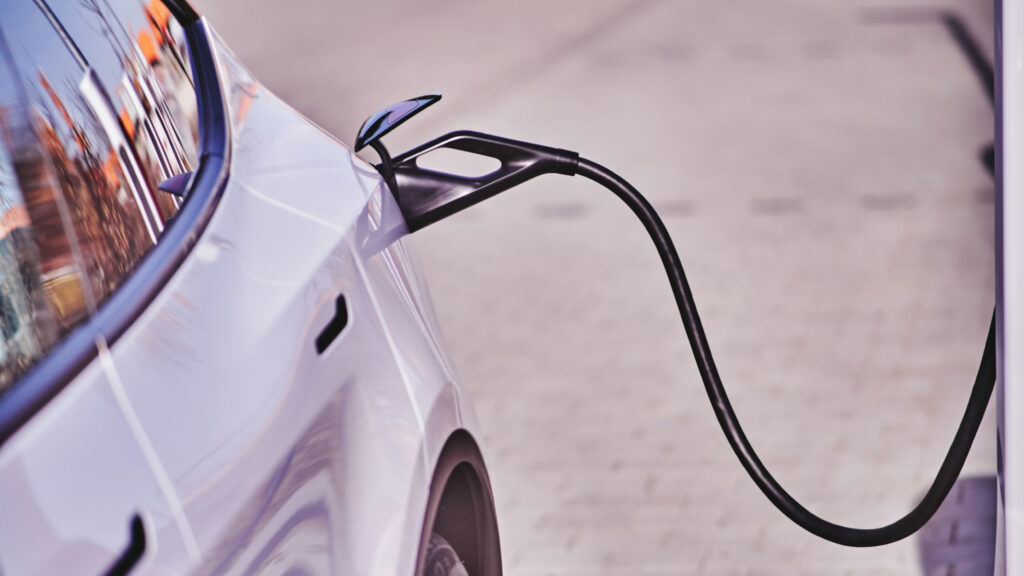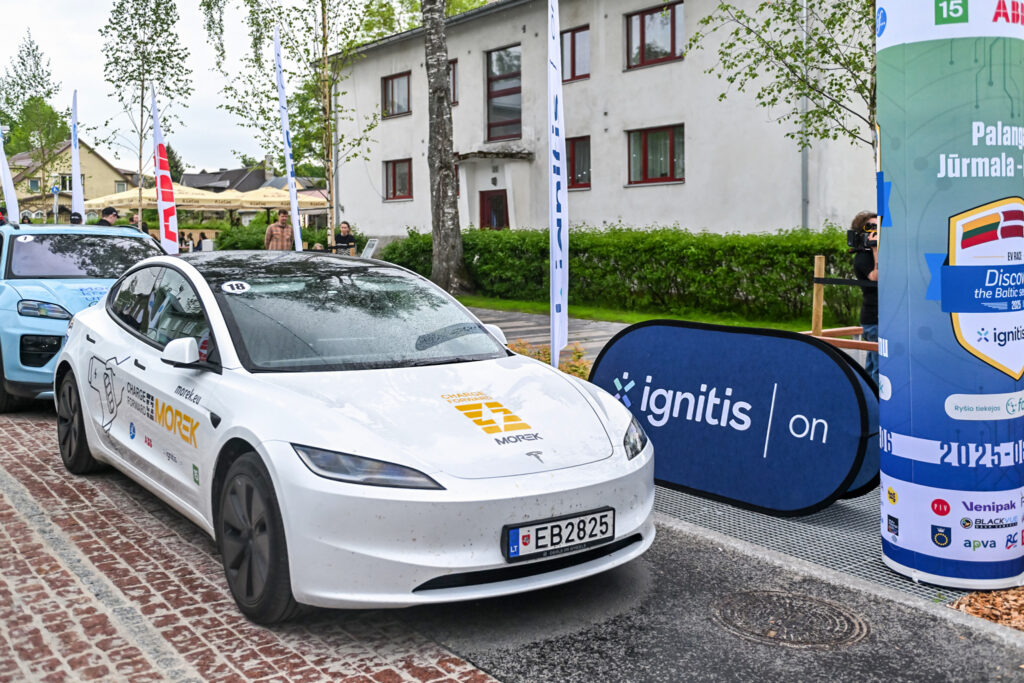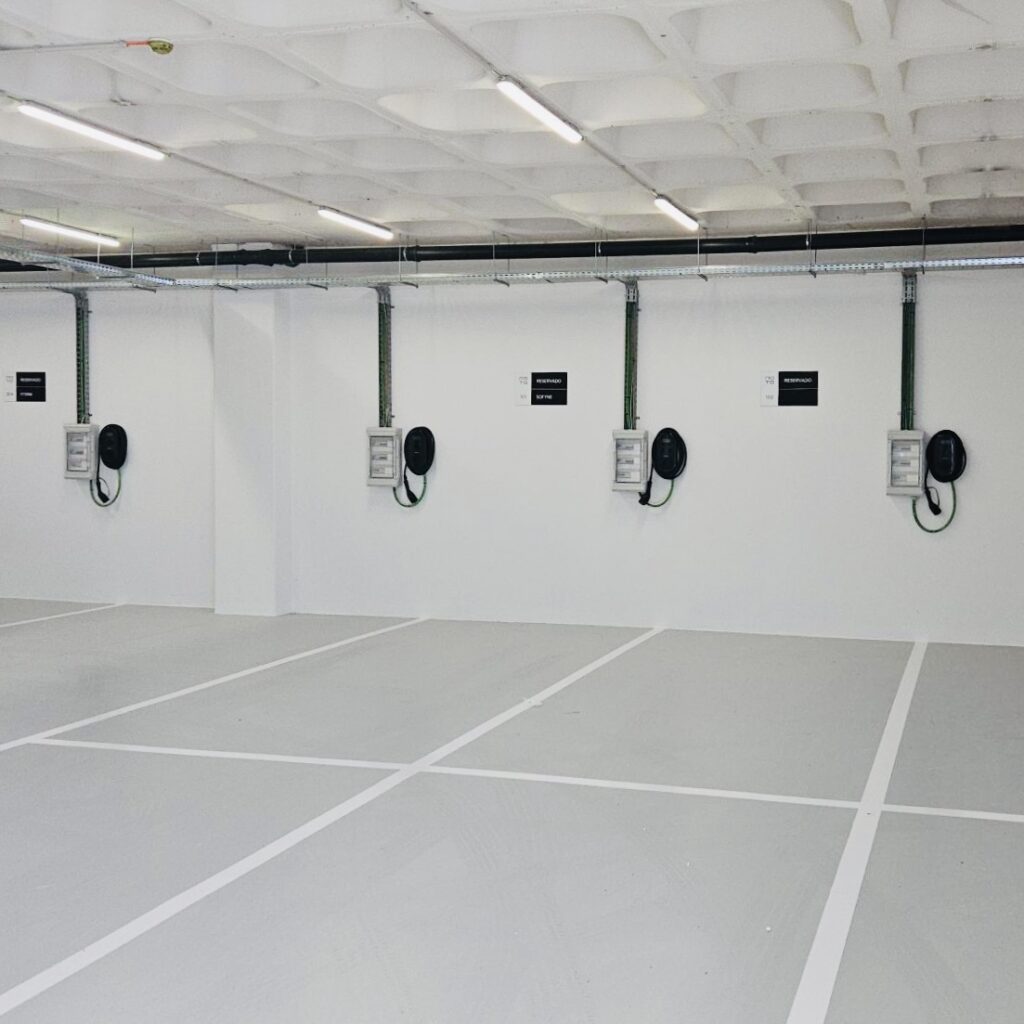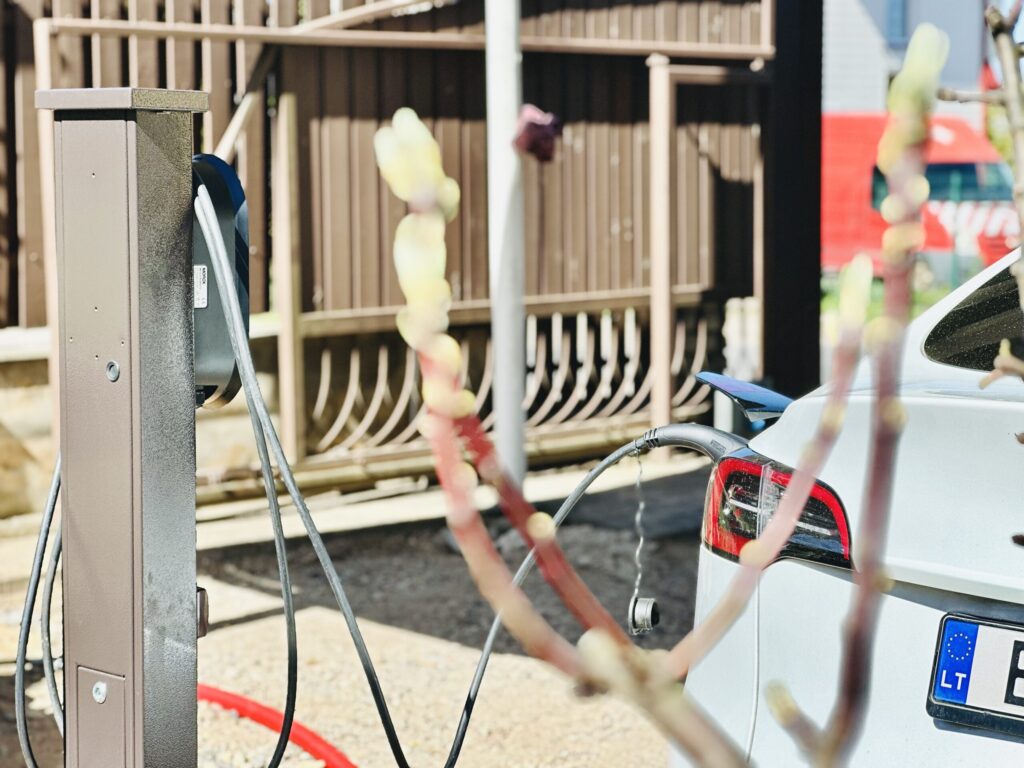Shorter range
You may have noticed that your smartphone battery tends to run down faster when you spend a day outside in the middle of winter. The same phenomenon can be observed with an EV’s range in cold weather. The electric current generated by a battery is produced when a connection is made between its positive and negative terminals. When the terminals are connected, a chemical reaction is initiated that generates electrons to supply the current of the battery. Lowering the ambient temperature causes chemical reactions to proceed more slowly, so a battery used at a low temperature produces less current than at a higher temperature.
As cold batteries run down they quickly reach the point where they cannot deliver enough current to keep up with the demand. If the battery is warmed up again it will operate normally.
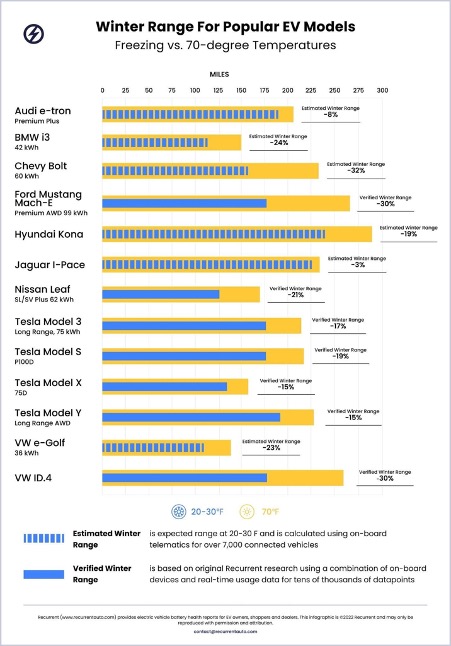
Lower charging performance
During really cold periods, your electric vehicle may also limit the amount of power taken in, meaning it will take longer to charge. On AC charging this can be more noticeable. There may even be that in cold weather the car won’t charge the batteries at all. All the energy is used to heat up the battery pack. In this case, the quickest solution is to use DC charging. As with more power available, the batteries will get warmed up more quickly. Also, a solution would be to warm the battery pack up before going to the charging station. For example, accelerate and slow down with the regenerative brake and drive like this for about 10-20 minutes. This method will put the batteries to work and therefore also heat them up.
What’s more, charging stations are also affected by a drop in the power delivered.
Depending on the battery technology onboard your EV, range and charging performance are more or less impacted during cold snaps. Fortunately, most EVs currently marketed are equipped with efficient thermal management systems to ensure the battery remains within the proper temperature frame and minimize the negative impact of cold weather.
Is it alright to switch the EV heating on in winter?
The heating system is an EV’s top energy consumer. Having said that, it probably consumes less than you think.
An engine or motor wastes energy creating heat as a by-product of its operation. A highly efficient electric motor produces very little heat so the air temperature must be raised by some other means. In early EVs, this meant the use of a simple resistive heater like the one found in a fan heater. This was a superbly inefficient use of power and something that manufacturers quickly strived to move away from.
All modern EVs prefer the use a heat pump system. This is a familiar heating system to anyone interested in eco-homes or sustainable buildings. A heat pump works very much like an air conditioner and is capable of moving heat into the cabin at efficiencies over 100%.
A conventional heater converts electrical energy into thermal energy. The heat pump takes thermal energy from the outside air and compresses it before releasing the heat inside. A super-efficient heat pump can generate over 4kW of thermal energy for every 1kW of electrical energy used. The good news is that heat pumps are becoming more widespread onboard new EV models arriving on the market. It might be a good idea to check out this point before purchasing an EV – especially if you’re opting for an older model.

What about the energy consumption of minor equipment such as headlights and windscreen wipers?
For the other onboard equipment (radio, windscreen wipers, and headlights), energy consumption is negligible. For instance, the headlights consume 120 watts on average, and windscreen wipers and the radio are less than 100 watts. They, therefore, don’t make much of a difference and can be used in cold weather regardless. An also good fact to know about the headlights, for example, is that they get their energy from a 12V battery, not from the battery back used for moving the car.
What about winter tires for electric cars?
If you decide to equip your EV with winter tires, you can expect slightly higher energy consumption. Why? Quite simply because they are made of a specific rubber compound that enhances grip in cold weather conditions.
Once again, energy consumption depends on your EV model and the quality of the tires you purchase. Preference should be given to tires specially produced for electric cars. This helps to reduce energy consumption. However, the size of the wheels is also important, the larger the diameter and the wider the tire, the more energy it takes to make them roll. It is definitely important to use tires with the dimensions specified by the factory.
How can the impact of cold weather on your EV be minimized?
Ideally, you should switch on or pre-set the heating to come on about 30 minutes before you leave while the vehicle is still connected to the charger. This means you are using the power supply from the grid rather than the battery of the car. That means you set off in the best possible conditions and reduce energy consumption while you’re driving as you only need to maintain cabin temperature since your battery has been “preheated” before your journey.
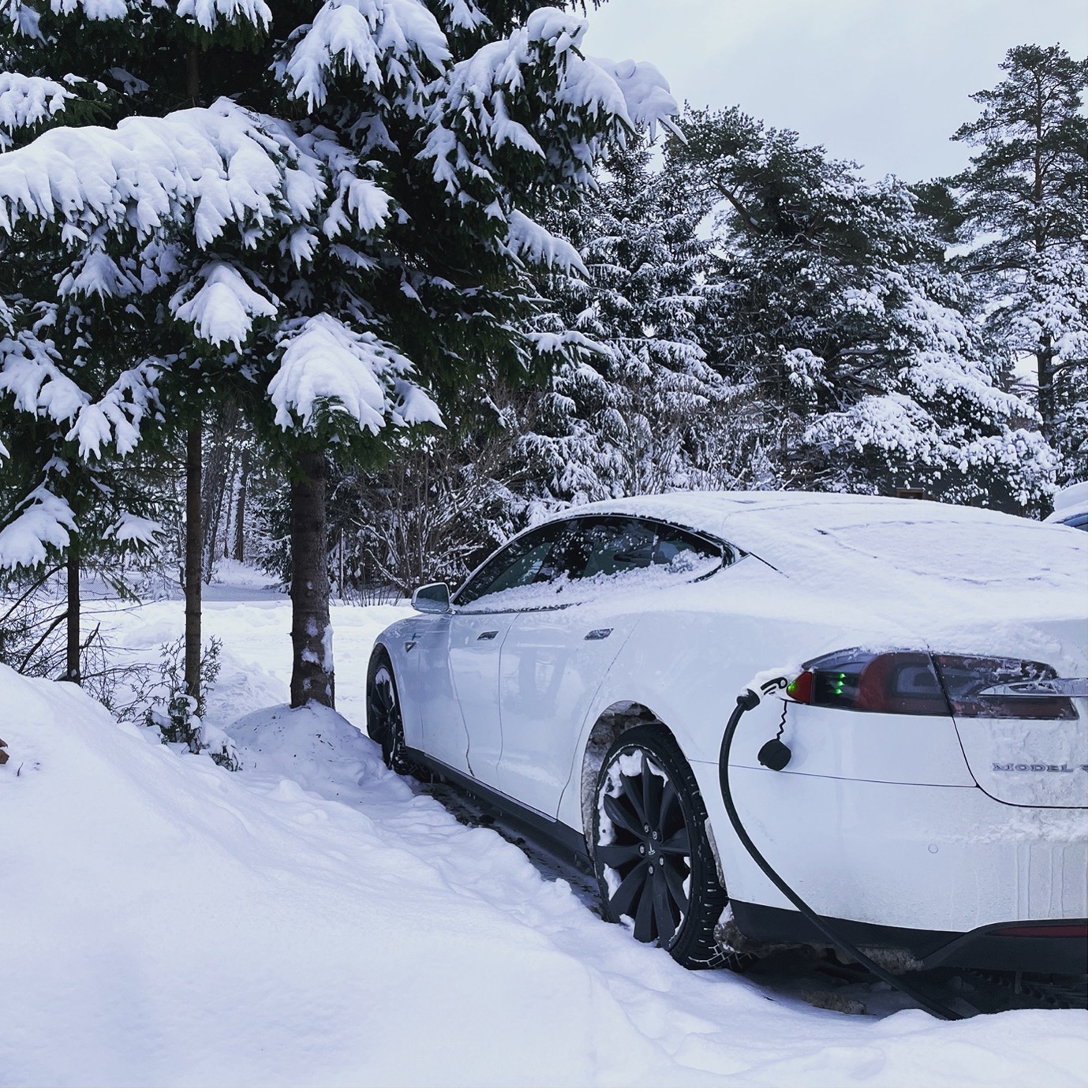
Heated seats and steering wheels
Heating the steering wheel and seats consumes less energy than a conventional cabin heating system. If you precondition your EV as mentioned above, heating the seats and the steering wheel will be sufficient to remain comfortably warm for a short or medium-length journey. In fact, it is much more energy efficient to heat only the driver’s workplace than to spend energy to heat all of the cabin. This is an option, of course, if you drive alone.
Take your foot off the accelerator
Do not hurry. It is not necessary to drive literally in Eco mode, but frequent and vigorous acceleration are the two main energy consumers. Smooth driving ensures a longer driving range!

